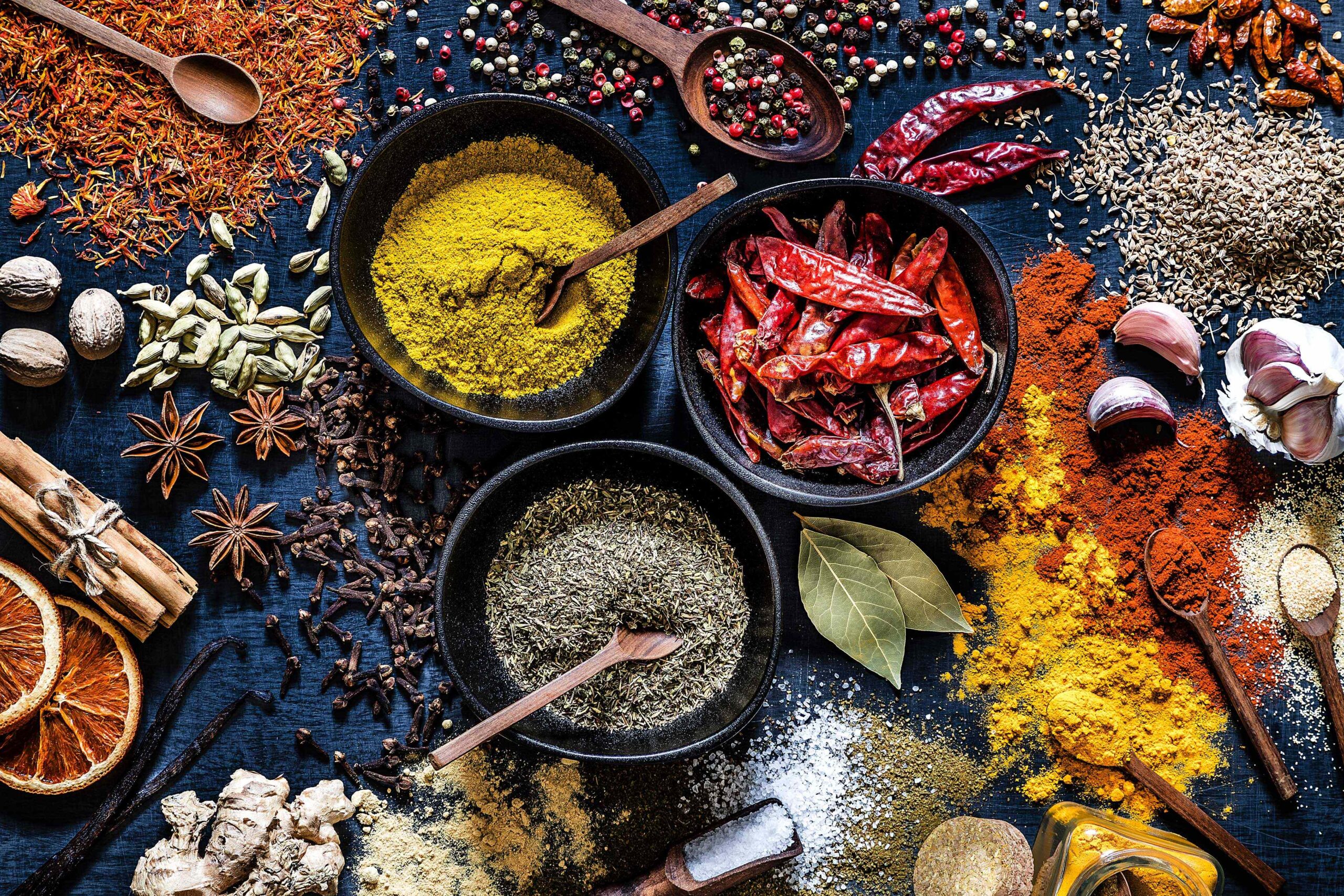:max_bytes(150000):strip_icc():format(jpeg)/Spices-Are-About-to-Get-More-Expensive-FT-BLOG0725-01-74dd543fd1f34a658a6de23fb28901fc.jpg)
Key Points
- Many global spices cannot be produced in the United States, putting them at risk of dramatically increasing prices if affected by tariffs.
- A recent comment by Commerce Secretary Howard Lutnick indicates that some agricultural products may be exempt from tariffs, but it remains to be seen if this is true.
- Tariffs may make it more difficult to access the spices that allow many Americans to taste culturally significant or beloved flavors and introduce them to others.
A dash of cinnamon from Sri Lanka, a hint of nutmeg from Indonesia, and Florida-grown sugar are all you need to season a classic apple pie. Like so many pieces of the fabric of the United States, this quintessentially American dish is made up of components from around the world.
“Spices are a metaphor for what’s happening broadly across the country,” says Ethan Frisch, co‑founder of the New York‑based spice importer Burlap & Barrel. “A discussion about what it means to be American — whether we’re talking about a person or an ingredient or a dish — all the elements have to come from other places. And what makes them special is the way that they get combined here.”
However, that convergence of global flavor might be under threat. Spices, along with other commodities, including everything from cars to toys, may soon become scarcer or far more expensive in the U.S. if President Donald Trump and his administration follow through on previously stated plans to impose sweeping tariffs on imports.
Trump’s decisions surrounding tariffs have shifted so much since his inauguration that The New York Times now keeps an official timeline to track the changes, proving that the promise of a trade agreement is never a guarantee.
In late July, just days before a looming August 1 deadline, the U.S. reached a tentative trade deal with the European Union, reducing the threatened 30% tariffs on goods imported from the bloc to 15%.
“We have stabilized on a single 15% tariff rate for the vast majority of EU exports. This rate applies across most sectors, including cars, semiconductors, and pharmaceuticals,” Ursula von der Leyen, President of the European Commission, wrote in a statement. “This 15% is a clear ceiling. No stacking. All-inclusive. So it gives much-needed clarity for our citizens and businesses. This is absolutely crucial.”
However, Europe was only one target. Trump has said India is “close” to a trade agreement, but absent a deal, spices and other goods from the subcontinent could potentially face a 25% levy. He has also threatened to raise tariffs on imports from Mexico to 30% and those from Canada to 35%.
It’s critical to remember that while tariffs will be paid by the importer — for example, the American companies that import goods from abroad — that doesn’t mean prices will directly increase by the same percentage as the tariff. It’s up to the companies to decide if they will pass this burden onto customers or absorb all or part of the cost associated with tariffs. It’s also key to note that the tariffs will not always be uniformly applied to all goods coming from different nations. For example, steel and aluminumwhich are crucial to the manufacturing of items like soda and beer cans in the U.S., could see higher tariffs. Some goods, however, may receive full exemptions.
The potential impact on the U.S. spice market
If these taxes are levied across the board, “tariff increases on spices will affect daily life,” explains Usha HaleyBarton Distinguished Chair in International Business at Wichita State University. “Most of the spices Americans use every day come from countries with warm, tropical climates, and the new policy will make them much more expensive. For example, the United States imports several basic spices, such as black pepper from India, Vietnam, and Brazil; vanilla from Madagascar; cinnamon from Sri Lanka and Indonesia; nutmeg and cloves from Indonesia and Grenada; and cardamom from Guatemala.”
Haley notes that produce like Peru’s aji amarillo pepper, Japanese yuzu, and Southeast Asian lychees would “also face shortages and price increases. Because we cannot grow these spices in large quantities in the U.S., higher tariffs, some as high as 50%, will raise costs for food makers and spice companies, especially smaller ones that don’t have the resources to offset the increases.”
For shoppers, she adds, that translates to “higher prices at grocery stores, fewer choices of premium spices, and the possibility that companies may switch to artificial flavorings to save money. With food prices already high from inflation, these changes will likely hit kitchens across America, from home cooks experimenting with global flavors to families buying everyday pantry staples like cinnamon and black pepper.”
There is, however, a glimmer of hope coming out of Washington, D.C. On July 30, Commerce Secretary Howard Lutnick stated in an interview with CNBC that “If a country produces something we don’t, it can enter at zero [tariffs].” While he didn’t specifically mention spices, he did add that “If we make an agreement with a country that produces mangoes or pineapples, then they can come in without tariffs. Coffee and cocoa could be other examples of natural resources [that will be exempt],” Merco Press reported.
This does not serve as a formal statement that agricultural products will be exempt from tariffs, but it indicates that the Trump administration may backtrack again on previously stated tariff plans — and when it comes to spices, the stakes are high.
Cultural impacts and the effect on businesses small to large
“We import what we were used to, what we grew up with — the flavors that are centuries old from Greece,” says Damian Primis, founder of the boutique importer Primis. “It’s more about preserving a food culture and introducing new people to that culture than it is just moving product. You can’t replace terroir. The United States produces a lot of great products, but the terroir isn’t the same in California as it is in Greece, Spain, or Italy. And those centuries‑old trees just can’t be replicated here.”
Primis, like many small‑business owners, finds the uncertainty almost worse than the possibility of the tariffs themselves. “They keep getting flip‑flopped and threatened, but you don’t know where it’s going to land,” he says. “It’s very difficult because you want to give your customers the right price.”
That anxiety is also reshaping the decisions of national wholesalers and retailers, who move thousands of pounds of spices each year.
Damian Primis
It’s more about preserving a food culture and introducing new people to that culture than it is just moving product.
— Damian Primis
“As you know, a significant portion of the spices we source are grown outside of the United States,” Allyson Lewis, CEO of The Spice Houseshared with the Senate Finance Committee in testimony earlier this year. “Many of the spices that we rely on, such as black pepper from India and saffron from Spain, are not cultivated domestically due to the specific climates and conditions required for their growth.”
Lewis goes on to detail the cascading effects that can result from prolonged tariff turmoil. “The imposition of tariffs on these imported spices creates several challenges, including increased procurement costs, supply chain disruptions, and potential shortages,” she says. “These tariffs directly impact our pricing structure, as we will have to adjust to reflect the additional import costs. Furthermore, fluctuations in international trade policies create uncertainty, making it harder to maintain consistent pricing and availability.”
The largest spice firms are bracing as well. On an earnings call in late June, Marcos Mendes Gabriel, executive vice president and chief financial officer of McCormick & Co.estimated that potential tariff changes could cost the company up to $90 million per year.
“At McCormick, we’re managing [to offset] the impact of new tariffs to keep delivering the great taste and value consumers and customers expect. By using smart sourcing strategies powered by cutting‑edge analytics and our continuous cost‑improvement approach, we’re able to offset much of these increased costs.
“We’re continuing to hit the right price points with a keen focus on maintaining the quality and flavor consumers love, without compromising on value,” a spokesperson said in an email. The company plans to invest in its “supply chain and technology” to counter rising ingredient costs but didn’t elaborate further on what that may look like.
The American Spice Trade Association (That) argues that the tariffs will not magically make it possible for the U.S. to grow products it simply doesn’t have the climate to produce. In a public statementthe ASTA says it “remains concerned about the unintended negative consequences new tariffs will have on our industry and American consumers. We reiterate our request that the administration implement a tariff‑exclusion process and exempt spices that are not grown in the United States.” It adds, “As such, tariffs on these products do not incentivize U.S. production or create American jobs. Instead, they place a significant financial burden on U.S. food manufacturers, restaurants, and, ultimately, American consumers.”
Moreover, as Frisch explains, the longer-term cost could be American companies’ capacity for innovation and creativity.
“Our top priority is to keep these supply chains stable so that when we get back to a more rational understanding of international trade, we’ll still be here,” he says, noting that his company has paid out around $100,000 in tariffs already. For now, Burlap & Barrel is holding retail prices steady. Frisch notes, “That does mean some internal cuts — some innovation cutting, some experimental projects we were working on.”
The company already invests in plenty of homegrown flavors like wild ramps from the Adirondacks, Jimmy Nardello peppers and scallions from Upstate New York, salt from Syracuse, and chiles from California and New Mexico. Still, some tastes simply do not have domestic counterparts.
“Spices are the original imported ingredient,” says Frisch. “The spice trade goes back before recorded history. There’s evidence of spices being traded across huge distances, [with] people taking enormous personal and financial risk to move cloves from tiny islands in the South Pacific to the Middle East or Europe. We see ourselves as part of that long tradition, helping people get access to interesting ingredients.”
What is at stake, he adds, is the sprinkle, dash, or hint of flavor that transforms mere fuel into pleasure. “You don’t need them to survive,” Frisch points out. “It’s about the pleasure of eating, an enjoyment of flavor.” Plus, he notes, “They taste delicious.”

